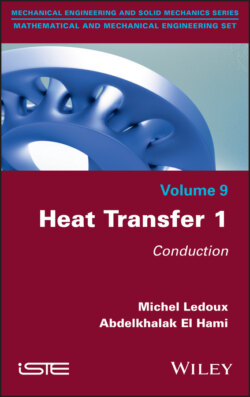Читать книгу Heat Transfer 1 - Bouchaib Radi, Ghias Kharmanda, Michel Ledoux - Страница 8
Оглавление
Preface
Thermal science is to thermodynamics as decree is to law. It answers the following question – which all good leaders must (or should) ask themselves whenever they have an “idea”: “How would this work in practice?”. In a way, thermal science “implements” thermodynamics, of which it is a branch. A thermodynamics specialist is a kind of energy economist. Applying the first principle, they create a “grocery store”. With the second principle, they talk about the quality of their products. I add or remove heat from a source or work from a system. And the temperature, among other things, defines the quality of the energy for me.
But by what means do I take or do I give? Even calculations of elementary reversible transformations do not tell us by what process heat passes from a source to a system.
Thermal science specifies how, but “evacuates” the work. If in a given problem related to, for example, a convector where electrical energy (therefore in the “work” category) appears, it is immediately dissipated into heat by the Joule effect.
Three heat transfer modes can be identified: conduction and radiation – which can be seen separately, although they are often paired up – and convection, which is by nature an interaction of fluid mechanics and conduction.
Dividing the study of thermal science into three is the result of logic. Presenting this work in three volumes is somewhat arbitrary; in our opinion, however, this split was necessary in order to keep the volumes in the collection a reasonable size.
This book is Volume 1 of a collection of problems on heat transfer, devoted to thermal conduction and numerical approaches to such transfers. Despite being a collection of exercises a priori, a large part is given over to recalling the practice. To a large extent, the book constitutes a first introduction to the thermal calculation of practical devices, which may be stand-alone. For the subsequent calculations, the reader will not be spared the use of specialist textbooks or encylopedias available in the field of thermal engineering.
The book is intended to reach a wide audience, from technicians to engineers, to researchers in many disciplines, whether physicists or not, who have a one-off transfer problem to resolve in a laboratory context. With this in mind, the theoretical developments in the text itself are as direct as possible. Specialist readers, or those who are simply curious about further theoretical developments (general equations, specific problems, mathematical tools, etc.), may refer to the Appendices.
Volume 1, dedicated to “classic” approaches (analytical treatment) to conduction, will be of interest primarily to readers who are looking for “simple” prediction methods.
After the generalities outlined in Chapter 1, Chapter 2 presents the physical laws of conduction, describing the Fourier law and setting out the heat equation. We then pinpoint the fundamental content of the problems found in conduction and their approach. At this point, we will need to distinguish between stationary (we also refer to permanent regimes) and non-stationary problems.
Chapter 3 deals with conduction in a stationary regime. Emphasis is logically placed on plane and cylindrical geometries. Importance is placed on the concept of thermal resistance, an essential tool for thermal scientists, in both of these geometries. This chapter provides many examples of application of this concept.
Chapter 4 presents the notion of a quasi-stationary regime; this method, although approximate, does in fact have undeniable practical scope. Valid for relatively slow transfers – presuming the temperature environment is homogeneous – instantaneous balances can be obtained, in addition to the laws of thermal evolution that allow valid approximations to the problems that, in principle, relate to the variable regime. Again, in this context, this chapter deals with the plane and cylindrical problems.
Chapter 5 deals with variable conduction regimes. The most classic monodimensional problems are tackled: fixed temperature at the interface at the instant t = 0, non-stationary conduction at constant flow density, temperature with sinusoidal variation fixed at the interface and the problem of two adjoining walls.
Many examples are provided to illustrate this important aspect of conductive transfers.
Chapter 6 presents the notion of fin theory, which is associated with a few simple examples.
Within the Appendices, there are tables of error functions and their offshoots: erf, erfc, ierfc, as well as reminders that are often essential for hyperbolic functions. They also provide information on the notion of treating certain non-stationary problems using Laplace transformations. Again, many examples are given to illustrate another important aspect of conductive transfers.
November 2020
